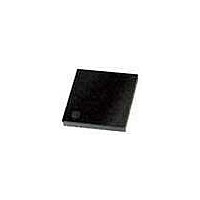PIC18F44K20-E/MV Microchip Technology, PIC18F44K20-E/MV Datasheet - Page 31

PIC18F44K20-E/MV
Manufacturer Part Number
PIC18F44K20-E/MV
Description
16KB, Flash, 768bytes-RAM, 36I/O, 8-bit Family,nanowatt XLP 40 UQFN 5x5x0.5mm TU
Manufacturer
Microchip Technology
Series
PIC® XLP™ 18Fr
Datasheet
1.PIC18F25K20T-ISS.pdf
(456 pages)
Specifications of PIC18F44K20-E/MV
Processor Series
PIC18
Core
PIC18F
Data Bus Width
8 bit
Program Memory Type
Flash
Program Memory Size
8 KB
Data Ram Size
512 B
Interface Type
I2C, SPI, SCI, USB, MSSP, RJ11
Maximum Clock Frequency
64 MHz
Number Of Programmable I/os
35
Number Of Timers
4
Operating Supply Voltage
1.8 V to 3.6 V
Maximum Operating Temperature
+ 125 C
Mounting Style
SMD/SMT
Package / Case
UQFN-40
Development Tools By Supplier
MPLAB Integrated Development Environment
Minimum Operating Temperature
- 40 C
Operating Temperature Range
- 40 C to + 125 C
Supply Current (max)
30 uA
Core Processor
PIC
Core Size
8-Bit
Speed
48MHz
Connectivity
I²C, SPI, UART/USART
Peripherals
Brown-out Detect/Reset, HLVD, POR, PWM, WDT
Number Of I /o
35
Eeprom Size
256 x 8
Ram Size
768 x 8
Voltage - Supply (vcc/vdd)
1.8 V ~ 3.6 V
Data Converters
A/D 14x10b
Oscillator Type
Internal
Operating Temperature
-40°C ~ 125°C
Lead Free Status / Rohs Status
Details
- Current page: 31 of 456
- Download datasheet (4Mb)
2.4.3
The LP, XT and HS modes support the use of quartz
crystal resonators or ceramic resonators connected to
OSC1 and OSC2 (Figure 2-3). The mode selects a low,
medium or high gain setting of the internal inverter-
amplifier to support various resonator types and speed.
LP Oscillator mode selects the lowest gain setting of the
internal inverter-amplifier. LP mode current consumption
is the least of the three modes. This mode is best suited
to drive resonators with a low drive level specification, for
example, tuning fork type crystals.
XT Oscillator mode selects the intermediate gain
setting of the internal inverter-amplifier. XT mode
current consumption is the medium of the three modes.
This mode is best suited to drive resonators with a
medium drive level specification.
HS Oscillator mode selects the highest gain setting of the
internal inverter-amplifier. HS mode current consumption
is the highest of the three modes. This mode is best
suited for resonators that require a high drive setting.
Figure 2-3 and Figure 2-4 show typical circuits for
quartz crystal and ceramic resonators, respectively.
FIGURE 2-3:
2010 Microchip Technology Inc.
Note 1: A series resistor (R
C1
C2
2: The value of R
quartz crystals with low drive level.
selected (typically between 2 M to 10 M.
LP, XT, HS MODES
Quartz
Crystal
R
S
(1)
QUARTZ CRYSTAL
OPERATION (LP, XT OR
HS MODE)
F
varies with the Oscillator mode
OSC1/CLKIN
OSC2/CLKOUT
R
S
F (2)
) may be required for
PIC
®
MCU
Sleep
To Internal
Logic
FIGURE 2-4:
PIC18F2XK20/4XK20
Note 1: A series resistor (R
Note 1: Quartz crystal characteristics vary according
C1
C2 Ceramic
2: The value of R
3: An additional parallel feedback resistor (R
2: Always verify oscillator performance over
3: For oscillator design assistance, reference
Resonator
ceramic resonators with low drive level.
selected (typically between 2 M to 10 M.
may be required for proper ceramic resonator
operation.
• AN826, “Crystal Oscillator Basics and
• AN849, “Basic PIC
• AN943, “Practical PIC
• AN949, “Making Your Oscillator Work”
to type, package and manufacturer. The
user should consult the manufacturer data
sheets for specifications and recommended
application.
the V
expected for the application.
the following Microchip Applications Notes:
Crystal Selection for rfPIC
Devices” (DS00826)
(DS00849)
Analysis and Design” (DS00943)
(DS00949)
DD
R
P (3)
R
S
and temperature range that is
(1)
CERAMIC RESONATOR
OPERATION
(XT OR HS MODE)
F
varies with the Oscillator mode
OSC1/CLKIN
OSC2/CLKOUT
S
R
) may be required for
®
F
(2)
Oscillator Design”
®
PIC
Oscillator
DS41303G-page 31
®
®
and PIC
MCU
To Internal
Logic
Sleep
®
P
)
Related parts for PIC18F44K20-E/MV
Image
Part Number
Description
Manufacturer
Datasheet
Request
R

Part Number:
Description:
Manufacturer:
Microchip Technology Inc.
Datasheet:

Part Number:
Description:
Manufacturer:
Microchip Technology Inc.
Datasheet:

Part Number:
Description:
Manufacturer:
Microchip Technology Inc.
Datasheet:

Part Number:
Description:
Manufacturer:
Microchip Technology Inc.
Datasheet:

Part Number:
Description:
Manufacturer:
Microchip Technology Inc.
Datasheet:

Part Number:
Description:
Manufacturer:
Microchip Technology Inc.
Datasheet:

Part Number:
Description:
Manufacturer:
Microchip Technology Inc.
Datasheet:

Part Number:
Description:
Manufacturer:
Microchip Technology Inc.
Datasheet:










